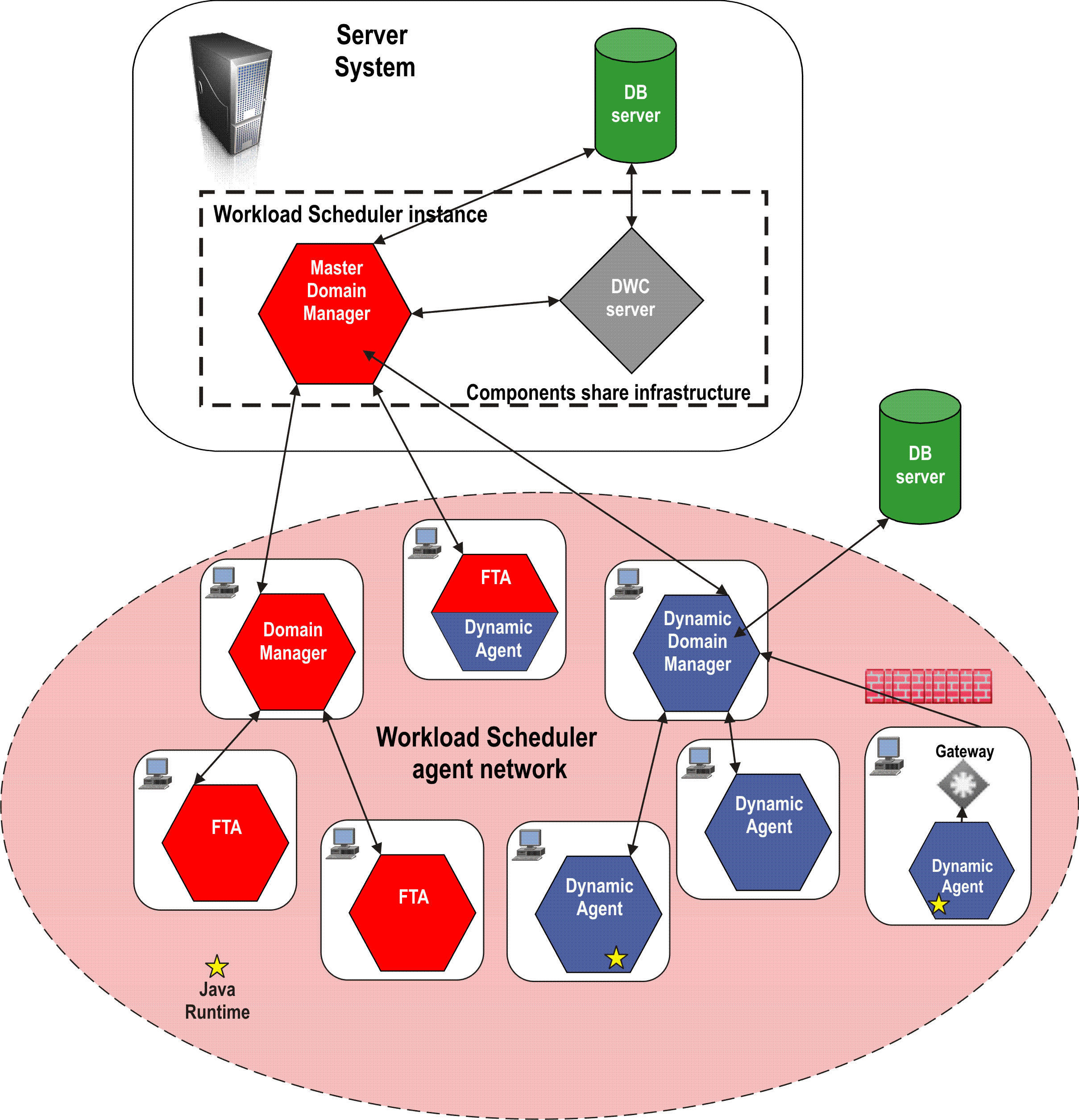Distributed workload environment with static and dynamic scheduling capabilities
Use this configuration to run workload both statically and dynamically across your distributed network.
The run time environment is used to:
- Run on the agent job types with advanced options, both those supplied with the product and the additional types implemented through the custom plug-ins.
- Enable the capability to remotely run, from the agent, the dynamic workload broker resource command on the server.
In this configuration, you can choose whether or not to add the run time environment for Java™ jobs to the agent.
Figure 1 shows the system
resources required to install a fully working HCL Workload Automation environment
for running your distributed workload both statically and dynamically. HCL Workload Automation requires
a fault-tolerant agent and a dynamic agent to be installed on every
system where jobs are to scheduled statically or dynamically.
Note: A dynamic agent can be directly connected to its master
domain manager or through a dynamic domain manager as
shown in Figure 1. In more complex
network topologies where the master domain manager or
the dynamic domain manager cannot
directly communicate with the dynamic agent,
you can configure your dynamic agents to use a local or remote gateway.
For more information about the gateway parameters specified when installing
a dynamic agent,
see Agent installation parameters - twsinst script.
For more information about gateway configuration, see Configuring dynamic agent communications through a gateway in the network communications information in the Administration Guide.
Figure 1. Distributed workload environment
with static and dynamic scheduling capabilities

For a list of features partially or not supported in a mixed
environment, see Table 1.